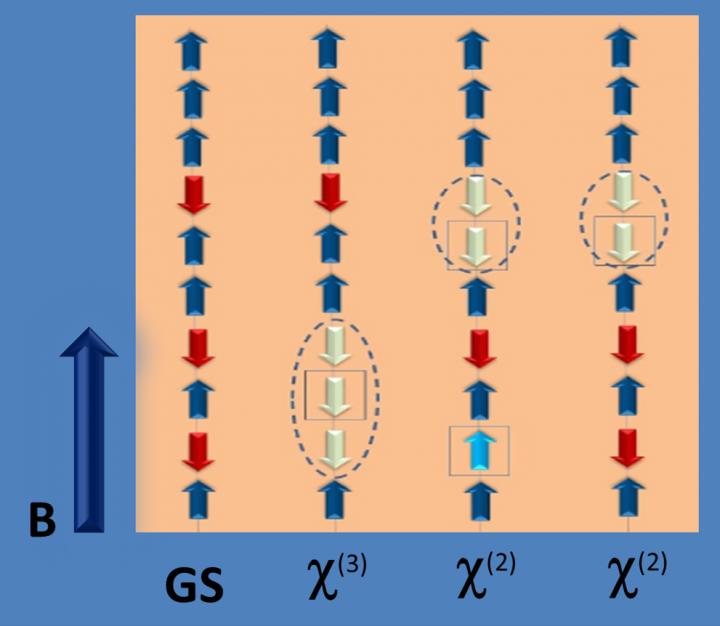Long-standing prediction of quantum physics now proven

Credit: HZB
The regular arrangement of atoms in a crystal allows complex interactions that can lead to new states of matter. Some crystals have magnetic interactions in only one dimension, i.e. are they magnetically one-dimensional. If, in addition, successive magnetic moments are pointing in opposite directions , then we are dealing with a one-dimensional antiferromagnet. Hans Bethe first described this system theoretically in 1931, predicting also the presence of excitations of strings of two or more consecutive moments pointing in one direction, so called Bethe strings.
However those string states could not be observed under normal experimental conditions because they are unstable and obscured by the other features of the system. The trick used in this paper is to isolate the strings by applying a magnetic field.
Now an international cooperation around the HZB physicist Bella Lake and her colleague Anup Bera was able to experimentally identify and characterise Bethe strings in a real solid for the first time. The team made crystals of SrCo2V2O8, which is a model system one-dimensional antiferromagnnet. Only the cobalt atoms have magnetic moments, they all are aligned along one direction and adjacent moments cancel each other out.
At the Berlin neutron source BER II it was possible to investigate the sample with neutrons under extremely high magnetic fields up to 25.9 Tesla. From the data, the physicists obtained a phase diagram of the sample as a function of the magnetic field, and also further information about the internal magnetic patterns, which could be compared with the idea of Bethe that were quantified by a theoretical group led by Jianda Wu.
“The experimental data are in excellent agreement with the theory,” says Prof. Bella Lake. “We were able to clearly identify two and even three chains of Bethe strings and determine their energy dependence. These results show us once again how fantastically well quantum physics works.”
###
Media Contact
Antonia Roetger
[email protected]
Original Source
https:/
Related Journal Article
http://dx.




